Iksan National Museum (국립익산박물관)
4.8Km 2024-04-07
362, Mireuksaji-ro, Iksan-si, Jeonbuk-do
+82-63-830-0900
Iksan National Museum is located near Mireuksa Temple Site (Historic Site No. 150), one of the largest temples of the Baekje dynasty during the Three Kingdoms Period. A total of roughly 19,200 artifacts were unearthed during archaeological research in 1980-1996, and the museum was opened as Mireuksa Temple Site National Museum in 1997 to display these findings. The Stone Pagoda of Mireuksa Temple Site (National Treasure No. 11) was restored in 2009, and the site was recognized as a World Heritage by the UNESCO in 2015, afterwhich the museum name was changed to the current Iksan National Museum. The museum also offers various cultural events and programs, including on-site education, historical and cultural lectures, and summer culture school.
Mireuksa Temple Site [UNESCO World Heritage] (익산 미륵사지 [유네스코 세계문화유산])
4.9Km 2024-04-07
362, Mireuksaji-ro, Iksan-si, Jeonbuk-do
+82-63-859-3873
Mireuksa was the largest Buddhist temple of the ancient Baekje Kingdom (18 BC-AD 660). According to Samgukyusa (historical records published in 1281), King Mu (30th king of Baekje, in power AD 600-641) and his wife Queen Seonhwa were said to have seen a vision of Mireuksamjon (the three Sanskrit) emerging from a large pond. At the time of their revelation, the king and queen were on their way to visit a Buddhist monk in Sajasa Temple on Yonghwasan Mountain (now known as Mireuksan Mountain). In response to their vision, the king drained the nearby pond and established Mireuksa Temple. The temple is believed to have shown the most advanced architectural and cultural skills of Baekje, Silla, and Goguryeo (the three main kingdoms at that time). Records indicate that King Jinpyeong of Silla even sent his craftsmen over to assist with the temple construction.
The two main features of the Mireuksa Temple Site are the stone pagoda (Mireuksaji Seoktap) and the flagpole supports (Mireuksaji Dangganjiju). The 14.24-meter-high west stone pagoda (National Treasure No. 11) is the oldest and largest Korean stone pagoda in existence. The west pagoda currently has only six tiers, but is estimated to originally have had nine. The nine-story east stone pagoda (27.67 meters in x_height) was restored to its original stature in 1993 based on historical records. Other surviving landmarks include the flagpole supports (Treasure No. 236) to the south of the stone pagodas. The 395 centimeter-tall poles are estimated to have been created during the Unified Silla period (AD 676-935) and are set 90 meters apart from east to west.
Dongboseong (동보성)
6.7Km 2024-04-07
437, Hana-ro, Iksan-si, Jeonbuk-do
Dongboseong is an authentic Chinese restaurant serving dishes prepared by a number of chefs from China. It has separate rooms and large banquet rooms for group dining.
Iksan Ten Million Chrysanthemum Festival (익산천만송이국화축제)
6.8Km 2024-10-08
322 Hana-ro, Iksan-si, Jeonbuk-do
+82-63-859-4977
The Iksan Ten Million Chrysanthemum Festival is held every year from late October to early November. The festival features an outdoor chrysanthemum exhibit, city agricultural hall, cultural performances, music fountain and much more as well as food.
Wanju Samrye Culture & Arts Village (완주 삼례문화예술촌)
7.5Km 2024-04-07
81-13, Samnyeyeok-ro, Wanju-gun, Jeonbuk-do
+82-63-290-3862
Samrye Culture & Arts Village is an art village also referred to as "Samsamyeyemimi." Once used as a granary and an official residence during the Japanese administration, it has now become a village of art. The village consists of Design Museum, Visual Media Art Gallery, Kim Sang-rym Carpentry Shop (Wood Works), and Book Museum and offers a variety of programs during exhibition events and art festivals.
Bibinakan (비비낙안)
8.1Km 2024-10-15
26 Bibijeong-gil, Samnye-eup, Wanju-gun, Jeonbuk-do
Climbing the steep stairs leading to Bibinakan affords one a view of the open lawn and view of the cafe where BTS members sat comfortably. The scenery of Wanju and the leisurely flow of the Mangyeonggang River as well as downtown Jeonju can be seen in a panoramic view without obstruction. Especially when the sun goes down, the sunset over the river is spectacular scenery.
Korea Expressway Corporation Arboretum (한국도로공사수목원)
11.3Km 2024-05-28
462-45 Beonyeong-ro, Deokjin-gu, Jeonju-si, Jeonbuk-do
+82-63-212-0652
The Korea Expressway Corporation Arboretum is located in Jeonju and operated by Korea Expressway Corporation. The arboretum was opened to counterbalance the environmental damage caused by the construction of expressways. As such, the arboretum maintains and promotes the conservation of many beautiful flora from across the country.
Jeonju World Cup Stadium (전주월드컵경기장)
11.7Km 2024-04-07
1055, Girin-daero, Deokjin-gu, Jeonju-si, Jeonbuk-do
+82-63-239-2546
The Jeonju World Cup Stadium was built with tradition in mind as its roof and stands are designed with an image of traditional fan, the pillars in sotdae design and cables in 12 strings of gayageum.
Open Space Nu-e (복합문화지구 누에)
11.9Km 2024-04-06
462-9 , Wanju-ro, Wanju-gun, Jeonbuk-do
Nu-e, a complex cultural district located in Wanju-gun, Jeollabuk-do, opened with the goal of "a living space where everyone communicates through art." As part of the cultural regeneration project, it was built in the Jeollabuk-do Jameop (silkworm business) testing center complex and is carrying out projects such as cultural and artistic education, exhibition planning, and the creation of creative spaces. Facilities include Nu-e Art Hall, where various art exhibitions and performances are held, guesthouse 'Sum' for local residents, a camping ground and lounge, a pottery room, a kiln room, etc. There is a children's space called "Dreaming Nu-e Playground" where adults are not permitted, making it a good place for family trips. It is also recommended to visit the Jeonbuk Provincial Museum of Art and Samnye Culture and Art Village, representative tourist facilities in Wanju-gun.
Palbok Art Factory (팔복예술공장)
13.2Km 2024-05-02
46 Guretdeul 1-gil, Deokjin-gu, Jeonju-si, Jeonbuk-do
Palbok Art Factory was founded in an old cassette tape factory twenty-five years after it went out of business with the advent of the CD. The factory aims to spread art and artistic creativity to the world, much like the previous cassette tape company did at their peak in the '80s.
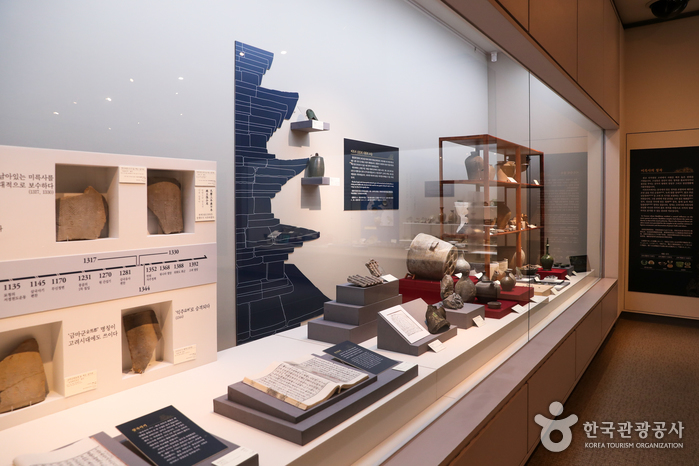
![Mireuksa Temple Site [UNESCO World Heritage] (익산 미륵사지 [유네스코 세계문화유산])](http://tong.visitkorea.or.kr/cms/resource/91/2514991_image2_1.jpg)
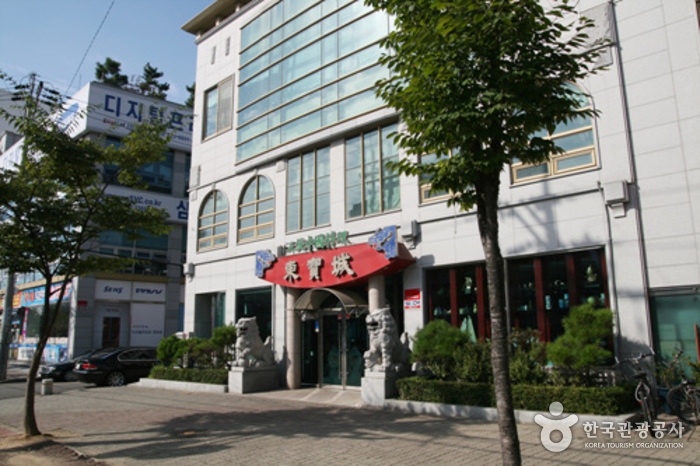

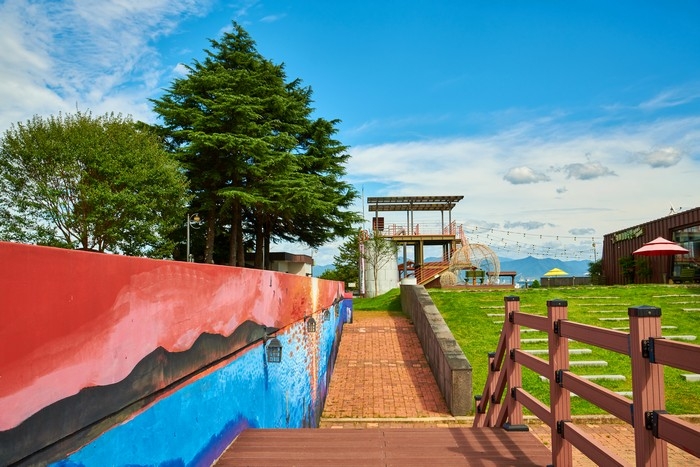
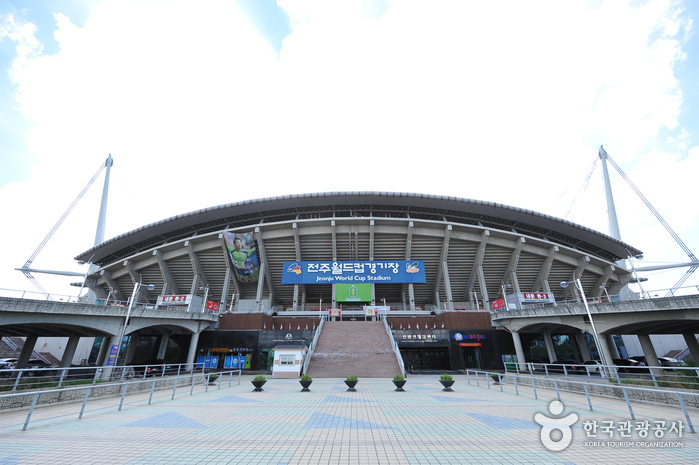
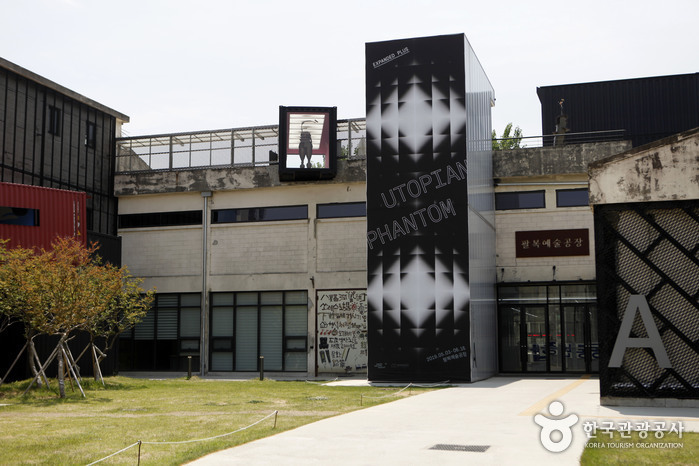
 English
English
 한국어
한국어 日本語
日本語 中文(简体)
中文(简体) Deutsch
Deutsch Français
Français Español
Español Русский
Русский